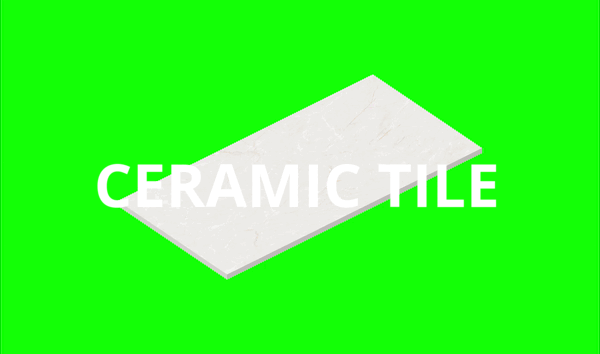PRODUCT SIZE
250x320x5mm
![]()
GEOLOGICAL PERIOD
Holocene - Quaternary
Present - 3 MYA
COMPOSITION
Clay
Water
Sand (Silica)
Feldspar
Flint
250x320x5mm

GEOLOGICAL PERIOD
Holocene - Quaternary
Present - 3 MYA
COMPOSITION
Clay
Water
Sand (Silica)
Feldspar
Flint
GEOLOGICAL BIO
Ceramic tile is permanently dehydrated clay. Clay is formed by soil erosion, rock weathering, or diagenesis (burial), especially of volcanic ash. As plants evolved on earth’s surface, clay soil became a crucial source of nutrients and stability for plants, and in human societies it became a foundation for crafts and building materials, such as the tile.
It takes between 2000 years and 2 million years for clay to form in the ground (around 200-400 years to form 1 centimeter of clay soil), and 10 hours for clay to be fired in a kiln. The resulting low-porosity tile is simultaneously prone to breakage and super-durable, lasting hundreds or even thousands of years as a geo-historical record (ceramic petrography is in fact a type of mineralogical analysis used in archaeology to determine the provenance and craft basis of an object).
EXTRACTION / MANUFACTURING PROCESS
Mine clays and minerals ︎︎︎ blend into a fine powder and mix to form clay slurry ︎︎︎ press into tile shape ︎︎︎ glaze (optional) ︎︎︎ fire in kiln at temperatures around 2000°F (1100°C) ︎︎︎ stack, pack, and ship
Ceramic tile is permanently dehydrated clay. Clay is formed by soil erosion, rock weathering, or diagenesis (burial), especially of volcanic ash. As plants evolved on earth’s surface, clay soil became a crucial source of nutrients and stability for plants, and in human societies it became a foundation for crafts and building materials, such as the tile.
It takes between 2000 years and 2 million years for clay to form in the ground (around 200-400 years to form 1 centimeter of clay soil), and 10 hours for clay to be fired in a kiln. The resulting low-porosity tile is simultaneously prone to breakage and super-durable, lasting hundreds or even thousands of years as a geo-historical record (ceramic petrography is in fact a type of mineralogical analysis used in archaeology to determine the provenance and craft basis of an object).
EXTRACTION / MANUFACTURING PROCESS
Mine clays and minerals ︎︎︎ blend into a fine powder and mix to form clay slurry ︎︎︎ press into tile shape ︎︎︎ glaze (optional) ︎︎︎ fire in kiln at temperatures around 2000°F (1100°C) ︎︎︎ stack, pack, and ship
